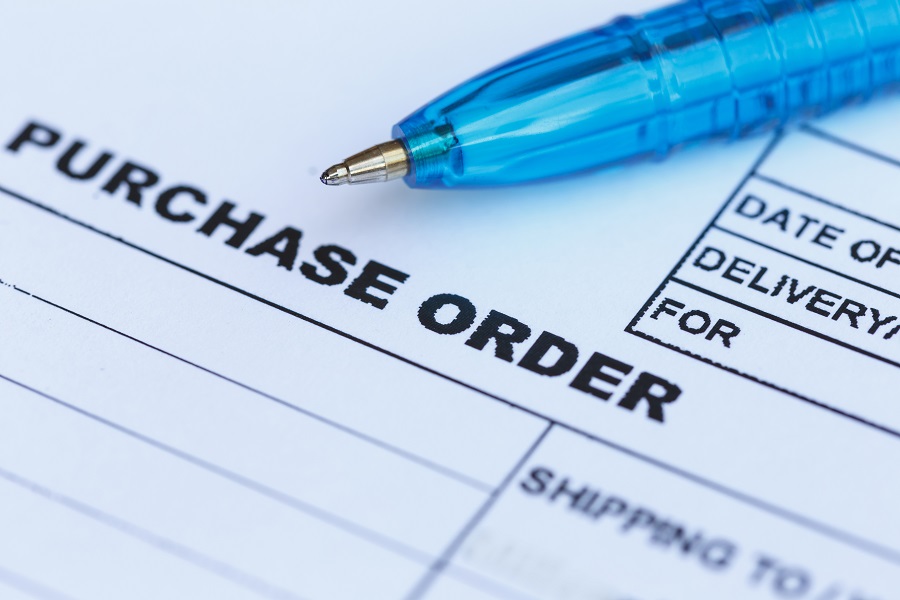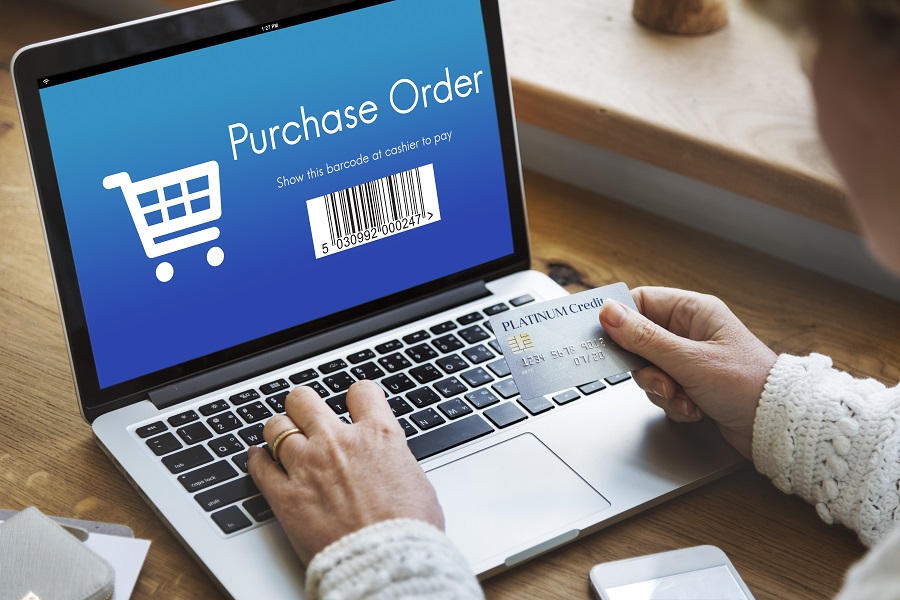30 Jan

A purchase order, or PO in business terms, is an important document that formalizes a transaction between a buyer and a seller. It outlines the products or services being requested by the buyer, along with key details of the purchase like quantities, agreed prices, delivery dates, shipping terms, and payment timeline.
While purchase orders may seem routine, they serve an essential purpose in procurement, accounting, logistics, and other critical business functions. Read on to understand how a purchase order works and how to create one properly.
What Are Purchase Orders?
A purchase order (PO) is a commercial document that a buyer sends to a seller. It tells the seller what products or services the buyer wants to purchase, how much they want, and the agreed-upon prices.
Essentially, a PO acts as an official request for the seller to ship specific goods or deliver particular services. The purchase order provides all the key details – item descriptions, quantities, costs, delivery instructions, etc.
When a seller receives a PO from a buyer, it serves as a binding agreement. The seller should have all they need to fulfill the order properly. Receiving the PO means they agree to provide the stated goods/services at the requested quantities, dates, and prices laid out by the buyer.
Purchase orders create accountability on both sides of a transaction. The buyer sets clear expectations through the PO. And the seller signals their acceptance of those terms by proceeding with the fulfillment of the order. POs provide clarity and documentation ensuring all parties know what is ordered, when it’s needed, how much it costs, and who is responsible.
Key Benefits of Purchase Orders
Using POs offers organizations several advantages:
Commit funding for purchases – POs reserve funding to ensure there are adequate financial resources available when it comes time to pay. This helps prevent overspending.
Improve vendor relationships – POs make the purchasing process more efficient for vendors by clearly defining expectations upfront. This enhances working relationships.
Track spending – All POs are recorded to provide visibility and analytics around spending – such as identifying large expenses or comparing vendors.
Simplify approval routing – PO workflows route each order to designated managers for review to ensure proper spending policies.
Standardize & control purchasing – POs enable centralized purchasing rather than individual departments handling their own ad hoc spending.
Also Read: Right POS System for Your Small Business
Key Sections of a Purchase Order

POs have a standardized format to communicate key details of an order to vendors. While PO formats can vary somewhat across different organizations, they typically include most of the following sections:
Header
- PO Number – Unique number that identifies the order.
- Order Date – Date PO was created.
- Vendor Details – Vendor name, address, contact info.
- Ship-to Address – Where the order must be shipped.
- Bill-to Address – Who will be billed. Often same as ship-to for small goods, but it can differ.
Order Details
- Item # – Line item number for ordered product/service.
- Part # / SKU – The vendor’s identifier number for the item.
- Item Description – High level description of item – may include size, color, etc.
- Quantity – Number of units ordered per line item.
- Unit Price – Price per individual unit, listed in currency.
- Line Total – Quantity x Unit Price.
- Special Instructions – Any notes for vendor related to that line item.
Totals
- Subtotal – Sum of all line totals.
- Shipping & Handling
- Discounts
- Taxes
- Total PO Value – Grand total due upon delivery.
Terms & Conditions
- Payment Terms – When payment is due – common terms are Net-30, Net-60, etc.
- Delivery Date – By when order must be delivered.
- Shipping Method – Ground, 2-Day Air, Overnight, etc.
- Validity – How long the PO is valid for (30 days, 6 months, etc).
- Authorized By – Manager who has approved that PO.
- Special Conditions – Anything the vendor needs to be aware of.
How Does a Purchase Order Work?

Now that we’ve covered the definition and key elements of a PO, let’s explore the purchase order process from beginning to end:
Assessment of Need
Prior to creating a PO, the buying organization must identify a need for a product or service. This may stem from an internal departmental request or a notification that inventory is running low. Determining specifications and requirements ahead of time is important for providing clear instructions to vendors.
Selection of Vendor
Next, the buyer selects an appropriate vendor to fulfill the order. Considerations may include finding the best combination of price, quality, lead time, shipping costs, returns policy, reliability, and past working relationships.
Creation of Purchase Order
The buyer then generates the actual purchase order document, including all necessary PO elements discussed earlier. Many organizations have master PO templates that include standard terms and conditions. This information can simply be imported so orders are consistently formatted.
Review and Approval
Before issuing the PO, it goes through an internal review and approval workflow to confirm all details are accurate, compliant with policies, and properly authorized based on spending limits. After all required approvals, the PO can be sent to the vendor.
Acceptance
The vendor receives and reviews the purchase order to ensure all included terms are acceptable. If everything looks good, the vendor accepts the order and begins taking steps to fulfill the request.
Fulfillment and Delivery
During this stage, the vendor delivers the products/services. The delivery date may be included right on the PO or take place based on lead times previously communicated to the buyer.
Invoice and Payment
Finally, once delivery is complete, the vendor issues an invoice charging for the goods/services. The buyer makes payment to the vendor according to the payment timing stated on the original PO document.
And that completes the typical purchase order cycle! The process creates accountability on both sides and provides documentation for all transactions.
Purchase Order Processing – Key Steps
We just walked through the stages of the PO process at a high level. Now let’s explore some of the detailed steps involved in purchase order processing from the buyer’s perspective:
Enter purchase order details – Compile required PO information into company’s procurement system or ERP platform
Route for approvals – If required, submit purchase request for manager electronic signatures
Confirm supplier – Verify if existing or new supplier will fulfill order; may require separate supplier setup
Determine fulfillment method – Will goods be drop-shipped or delivered to company location?
Confirm pricing and totals – Validate accuracy of prices, extensions and overall order cost
Check stock levels – Is requested quantity in stock or will it be a made-to-order fulfillment?
Monitor order status – Track progression through processing, shipping and delivery
Match invoice to PO – Compare invoice line items against original purchase order
Resolve mismatches – If invoice does not match PO, determine corrective actions
Process payment – Initiate invoice payment after confirming satisfactory order fulfillment
Having efficient procedures for these PO processing steps ensures orders translate smoothly from procurement requests through final payment.
Best Practices For Managing Purchase Orders
Here are a few tips for effectively managing the purchase order process:
Centralize templates – Use standardized PO formats for consistency
Establish approval authority – Clearly define who can approve POs for different dollar amounts
Monitor overall spending – Aggregate and analyze total expenditure on POs
Leverage ERP integration – Connect PO system with wider financial/inventory management platforms
Use electronic workflows – Automate routing, approvals, issuing and archiving of POs digitally
Clean up data issues – Eliminate duplicate vendors and harmonize supplier details
Add reference info – Include project codes, job numbers or categories as needed
Retain documentation – Keep digital copies of POs and related invoices, approvals etc.
Adopting these best practices helps optimize PO processes, enforce financial controls, improve reporting and pave the way for digital transformation.
When are Purchase Orders Required?
While purchase orders facilitate procurement for all varieties of products and services, they tend to be required in the following scenarios:
Government or highly regulated agencies – Strict financial compliance is mandatory
Purchasing high-value equipment – Large spends require formal approvals
Custom-built or complex products – Detailed specifications are needed for accurate
fulfillment
External party requests – PO serves as supporting document
New supplier onboarding – PO provides baseline to judge performance
Inventory restocking – Reorder quantities are clearly communicated
On the other hand, POs are sometimes waived for low-value, high-frequency purchases or renewals of ongoing services. Ultimately it depends on an organization’s internal policies.
Efficiently managing purchase orders is critical for businesses to maintain budget controls, process expenses accurately, and streamline procurement workflows. While manual processes can be error-prone and time-consuming, the right purchase order software solution can optimize these operations. With Hana Retail POS system, you can digitize the entire purchase order lifecycle from creation to closure. It also integrates with accounting to ensure accurate bookkeeping. Sign up FREE today!





